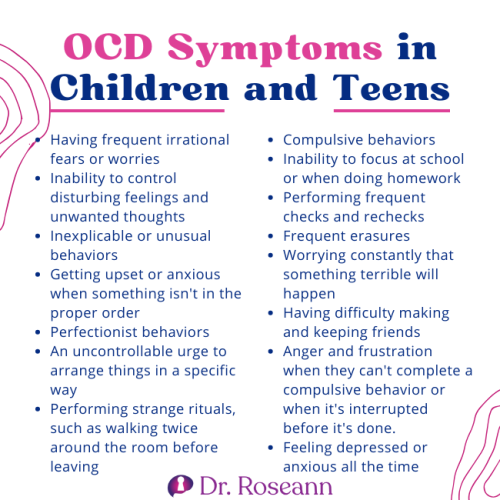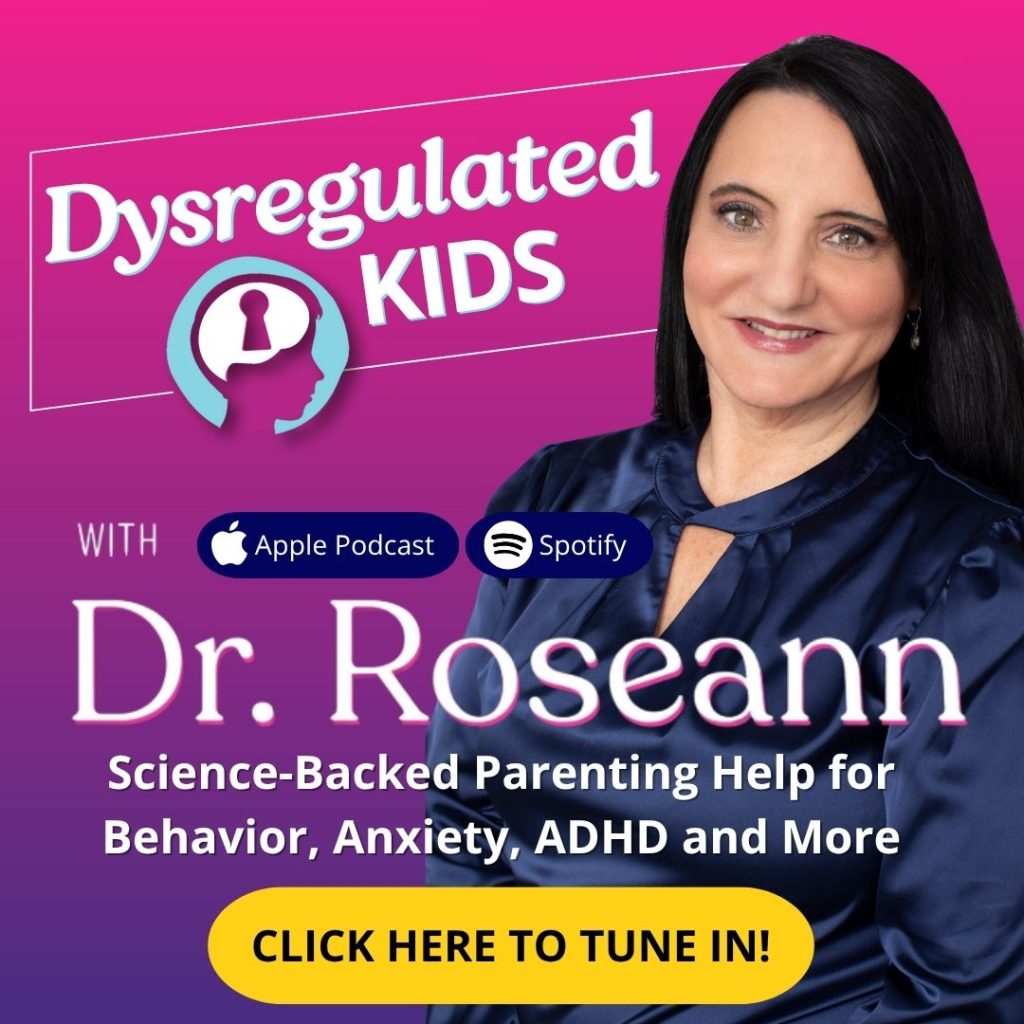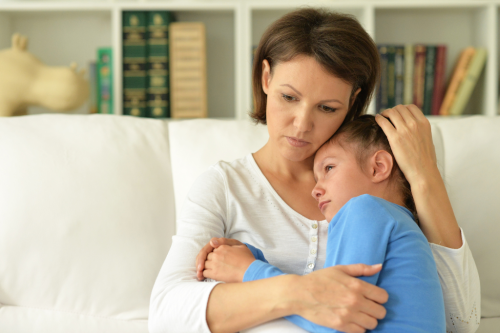Helping your child overcome OCD starts with calming the brain first—and you’re not alone.
What is OCD?
If your child is struggling with endless rituals, overwhelming worries, or intrusive thoughts, you might be wondering: Is this more than just anxiety?
OCD, or Obsessive-Compulsive Disorder, is a mental health condition where the brain gets stuck in a loop of fear and repetitive behaviors. It’s not about “being neat” or “liking things a certain way” — it’s about intrusive thoughts and compulsive actions that hijack daily life. Kids and teens with OCD often struggle in silence, appearing functional on the outside while battling relentless inner chaos. Recognizing OCD early is key to calming the brain and helping your child thrive.
Key Differences: OCD vs. General Anxiety
| OCD | General Anxiety |
| Intrusive, repetitive thoughts | Worry about real-life issues |
| Compulsive rituals to relieve fear | Avoidance or seeking reassurance |
| Fear feels illogical but urgent | Fear often tied to real-world concerns |
What are the Types of OCD?
OCD isn’t one-size-fits-all — it comes in many forms, and understanding the different types of OCD can help you spot the signs sooner. Children and teens might experience fears related to contamination, a need for symmetry, relentless checking, or intrusive thoughts they find distressing. Each form triggers specific compulsive behaviors aimed at relieving the unbearable anxiety OCD creates. Knowing what type your child struggles with can help guide the right treatment plan.

Common Types of OCD:
- Checking: Fear of harm or mistakes leading to compulsive checking (doors, locks, homework).
- Contamination: Intense fear of germs, sticky substances, or illness.
- Symmetry and Orderliness: Need for things to feel “just right” or perfectly aligned.
- Ruminations: Endless mental analysis of philosophical or “big” life questions.
- Intrusive Thoughts: Disturbing thoughts that cause shame or fear.
- Hoarding: Difficulty discarding possessions for fear of loss or harm.
- Responsibility OCD: Feeling of having to follow every rule perfectly
- Somatic: Hyperawareness of what’s going on inside the body like breathing, blinking, other things that happen automatically.
Julia, a caring mother of a 10-year-old girl, became increasingly concerned when she noticed her daughter spending hours rewriting her homework assignments. What initially seemed like perfectionism quickly revealed itself to be something deeper and more troubling. Her daughter explained that if she didn’t rewrite her work over and over, she was terrified a loved one might get hurt. Julia’s story highlights how OCD often masquerades as diligence but is truly driven by overwhelming fear and anxiety.

What are the Symptoms of OCD in Children and Teens?
Recognizing the symptoms of OCD early is essential to getting your child the right help. Obsessions are unwanted thoughts that cause anxiety, while compulsions are behaviors done to ease that anxiety. Symptoms can vary widely and often go unnoticed, especially in high-achieving kids who hide their struggles.
Symptoms of OCD
| Obsessions | Compulsions |
| Fear of contamination or harm | Excessive handwashing |
| Intrusive religious or violent thoughts | Checking locks or homework repeatedly |
| Need for symmetry | Arranging items until “just right” |
| Fear of upsetting loved ones | Seeking constant reassurance |

Read: How to Help Your Child Manage Scrupulosity OCD and Moral Doubts
What Causes OCD?
Parents often ask: Why is this happening to my child? OCD is a brain-based condition rooted in both genetics and neurobiology. It is not your fault and not your child’s fault. Certain areas of the brain get stuck in a hyperactive loop, especially the parts that regulate stress and switching thoughts. Genetics, environmental stressors, and even infections like strep can trigger or worsen OCD symptoms.
Key Factors:
- Genetic predisposition (OCD tends to run in families)
- Brain chemistry imbalance (especially serotonin)
- Environmental stress and trauma
- Infections triggering immune responses (PANS/PANDAS)

How is OCD Diagnosed?
Diagnosis of OCD is based on a careful clinical evaluation — there’s no single blood test or brain scan that gives a definitive answer. A skilled mental health professional looks for patterns of obsessions, compulsions, distress, and disruption to daily life. OCD is diagnosed when these symptoms are time-consuming (more than an hour a day) and cause significant problems with school, home life, or friendships.
Read: Test for OCD: Worried About Your Child’s Intrusive Thoughts, Worried Questions and Rituals?
Diagnosis Criteria:
- Presence of obsessions and/or compulsions
- Time-consuming or life-disruptive behaviors
- Not better explained by another disorder
Make sure to bring a notebook with specific examples to your first appointment. Clear observations help make the diagnostic process smoother and faster.
Read: Debunking 8 Common Myths About OCD
OCD and PANS/PANDAS
Sometimes, OCD symptoms can appear overnight in children, along with rage, separation anxiety, handwriting changes, and academic struggles. When this happens, it could be a sign of PANS or PANDAS, autoimmune conditions where the body’s immune response attacks the brain after an infection.
PANS/PANDAS vs. Traditional OCD
| Feature | PANS/PANDAS | Traditional OCD |
| Onset | Sudden and dramatic | Gradual and progressive |
| Associated with Infection | Often yes (strep, Lyme) | No |
| Co-occurring Symptoms | Tics, rage, cognitive decline | Anxiety-driven rituals |
Signs of PANS/PANDAS:
- Sudden, severe OCD symptoms
- Food restriction or eating challenges
- Tics or involuntary movements
- Emotional outbursts or personality changes
Read: Strep Throat OCD: Understanding the Connection and Treatment Options
OCD and Autism
Children with autism often experience repetitive behaviors—but how do you tell the difference between autism traits and OCD? While both involve repetition, OCD behaviors are driven by fear and anxiety, whereas autistic stimming is typically calming and sensory-based. Studies show a genetic overlap between OCD and autism, and kids with one condition are at higher risk of the other.
Key Differences:
- OCD rituals are anxiety-driven and distressing.
- Autism stimming is calming and self-soothing.
- OCD often involves intrusive, unwanted thoughts.
Noah, an imaginative 11-year-old with autism, had always been sensitive to textures. But when he began washing his hands obsessively out of fear of contamination, his parents realized this was more than sensory discomfort—it was OCD. His need for constant handwashing grew into an exhausting cycle of fear and ritual. With the right diagnosis and a plan that combined ERP therapy and nervous system calming strategies, Noah gradually learned to face his fears, trust his body, and break free from the rituals that once controlled him.

What Are the Best OCD Treatments for Kids?
The best approach to OCD treatment calms the brain first and uses evidence-based therapy. Cognitive Behavioral Therapy (CBT) paired with Exposure and Response Prevention (ERP) is the gold standard. Some kids also benefit from neurofeedback, EFT tapping, and targeted supplements like magnesium to support brain regulation.
Top OCD Treatment Tools
| Treatment | Benefit |
| CBT with ERP | Teaches kids to face fears and reduce rituals |
| Neurofeedback | Calms overactive brainwaves |
| EFT Tapping | Reduces anxiety quickly |
| Magnesium Supplementation | Balances neurotransmitters for brain calm |
Real-life example:
Sarah used ERP combined with magnesium and neurofeedback to help her son reduce nighttime rituals. Within three months, he was falling asleep faster and feeling calmer overall.
Citations:
iocdf.org/about-ocd/how-is-ocd-diagnosed/
ocduk.org/omayoclinic.org/diseases-condition/obsessive-compulsive-disorder/
https://drroseann.com/category/ocd/page/2/
Brown University. (2021, December 9). Researchers identify brain signals associated with OCD symptoms, paving the way for adaptive treatment. ScienceDaily. Retrieved November 4, 2022, from www.sciencedaily.com/releases/2021/12/211209124247.htm
How Can Parents Help Their Child with OCD?
As a parent, you are your child’s greatest ally. Early diagnosis, education, and the right support can make all the difference. Remember: Behavior is communication — your child’s rituals are their brain’s way of coping with overwhelming anxiety.
Ways to Help:
- Get an early diagnosis: Symptoms rarely go away on their own.
- Educate yourself: Learn about ERP and OCD treatment strategies.
- Be supportive but firm: Avoid accommodating rituals, which feeds the OCD cycle.
- Stay consistent: Celebrate small wins and gently encourage progress.

When Sarah realized that accommodating her son’s bedtime rituals was only strengthening his fears, she made a courageous decision to change course. With the support of his therapist, she began encouraging small, manageable exposures—like turning off the light without rechecking the door five times. At first, the new approach was hard for both of them. But night after night, with patience, encouragement, and a lot of deep breaths, Sarah watched her son’s anxiety shrink and his confidence grow. Over time, those once-consuming rituals faded away, and bedtime became a calm, predictable routine again. By staying steady and trusting the process, Sarah helped her son break free from the grip of OCD—and reclaim peace for their whole family.
If your child is struggling with OCD, remember: healing starts with calming the brain first.
With early intervention, the right support, and consistent brain-calming strategies, kids can retrain their nervous system, quiet intrusive thoughts, and reclaim their joy. Progress might feel slow at times, but every small step forward matters—and you don’t have to walk this path alone.
You are doing more for your child than you realize—and real, lasting change is possible.
FAQs About OCD Treatment
Can OCD in children go away without treatment?
Rarely. OCD symptoms tend to worsen without professional support.
Is medication always necessary for OCD?
Not always—many kids succeed with ERP therapy alone, though SSRIs can be helpful for severe cases.
How long does OCD treatment take?
Many children show major improvements within 12–16 weeks of consistent therapy.
Can magnesium really help OCD symptoms?
Yes! Magnesium can calm brain excitability, making it easier to manage intrusive thoughts.
Is it common for kids with OCD to have other conditions?
Yes. OCD often overlaps with anxiety, ADHD, autism, and PANS/PANDAS.
Citations
American Academy of Child and Adolescent Psychiatry [AACAP]. aacap.org/AACAP/families_and_youth/facts_for_families/FFF-Guide/obsessive-compulsive-disorder-in-children
International OCD Foundation. About OCD. Retrieved from iocdf.org/about-ocd/how-is-ocd-diagnosed/
Brown University. (2021, December 9). Researchers identify brain signals associated with OCD symptoms, paving the way for adaptive treatment. ScienceDaily. Retrieved November 4, 2022, from www.sciencedaily.com/releases/2021/12/211209124247.htm
Always remember… “Calm Brain, Happy Family™”
Disclaimer: This article is not intended to provide health advice. It is recommended to consult with a physician before beginning any new wellness program. The effectiveness of diagnosis and treatment varies by patient and condition. Dr. Roseann Capanna-Hodge, LLC does not guarantee specific results.
Are you looking for SOLUTIONS for your struggling child or teen?
Dr. Roseann and her team are all about science-backed solutions—so you are in the right place!
©Roseann Capanna-Hodge











